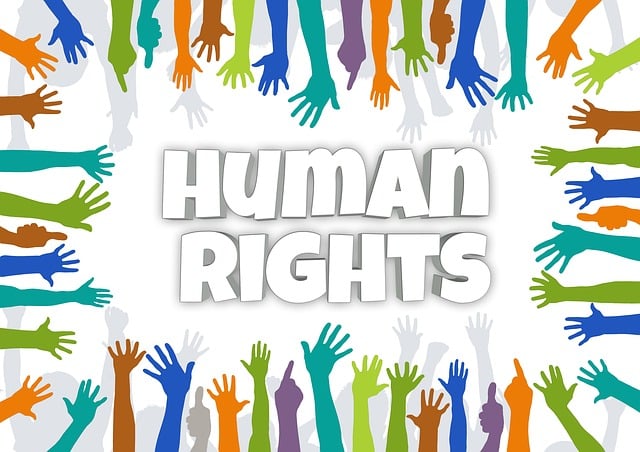Oregon's child welfare system operates under a web of intricate laws and policies (Oregon child welfare laws, DHS statutes) designed to protect children while considering parental rights. Understanding these regulations—including legal duties, protections, and procedures—is vital for parents, guardians, and agencies involved in the process. This comprehensive guide navigates Oregon child welfare laws, emphasizing family preservation, permanency planning, and fair court oversight, ultimately ensuring positive outcomes for Oregon's youth.
“Uncovering Legal Pathways in Oregon Child Welfare: A Comprehensive Guide. Oregon’s child welfare system navigates a complex web of laws and policies designed to protect vulnerable youth while ensuring their families’ rights. This article delves into the heart of these regulations, offering an in-depth look at Oregon child welfare laws and policies. From understanding key provisions to exploring legal rights for children and parents, we provide a step-by-step guide through the Oregon DHS statutes, highlighting court involvement, and clarifying responsibilities for all stakeholders. By the end, readers will be equipped with valuable insights into navigating this critical aspect of state legislation.”
- Understanding Oregon Child Welfare Laws: An Overview of Key Policies
- Legal Rights and Protections for Children Involved in Welfare Cases
- Navigating the Oregon DHS Statutes: A Step-by-Step Guide
- The Role of Court Involvement in Child Welfare Decisions
- Responsibilities of Parents/Guardians and Service Providers Under Oregon Law
Understanding Oregon Child Welfare Laws: An Overview of Key Policies

Understanding Oregon Child Welfare Laws provides a crucial foundation for anyone involved in or affected by the system. These laws, enshrined in Oregon DHS statutes, outline the legal rights and responsibilities of all parties, from parents and guardians to state agencies and court systems. Key policies focus on the safety, health, and well-being of children, with a strong emphasis on family preservation and permanency planning.
Navigating these child welfare policies requires careful consideration of various factors, including the legal obligations of both the state and parents. The goal is to ensure that all decisions are in the best interest of the child while also respecting the rights of families. This comprehensive approach aims to create a supportive environment that facilitates positive outcomes for children in Oregon’s child welfare system.
Legal Rights and Protections for Children Involved in Welfare Cases

Children involved in Oregon child welfare cases have specific legal rights and protections designed to safeguard their interests. According to Oregon child welfare laws, these rights include the right to be treated with dignity and respect, access to legal counsel, and the opportunity to participate in decisions affecting their care. The state’s DHS statutes emphasize the importance of preserving family connections and ensuring a safe, stable environment for all children involved.
Navigating child welfare policies in Oregon requires understanding both the rights of the child and the legal obligations of the parents or guardians. Child welfare agencies are bound by these laws and must adhere to strict procedures to protect the rights of the child while also working towards a positive outcome for the family. This includes ensuring transparency, providing clear explanations of the case progression, and offering resources to help families understand their legal standing in the process.
Navigating the Oregon DHS Statutes: A Step-by-Step Guide

Navigating the complex landscape of Oregon’s child welfare system can be daunting for parents and guardians, but understanding the state’s laws and policies is essential to protecting one’s legal rights. The Oregon Department of Human Services (DHS) oversees child welfare services, implementing a series of statutes and regulations designed to ensure the safety and well-being of children.
Here’s a step-by-step guide to help you navigate these laws:
1. Familiarize yourself with Oregon Child Welfare Laws: The state has established clear guidelines regarding child protection, removal, and placement. Understand the legal definitions of neglect, abuse, and dependency, as well as the procedures for reporting suspected cases.
2. Review DHS Statutes: Explore the Oregon DHS statutes, which detail the department’s responsibilities and powers. These laws outline the process for intake, investigation, and case management, including timeframes and requirements for court involvement.
3. Know Your Legal Rights: Be aware of your rights throughout the child welfare process. This includes the right to legal representation, access to information about your case, and the opportunity to participate in decisions affecting your child’s future.
4. Stay Informed: Keep up-to-date with any changes or updates to Oregon child welfare policies. The laws can evolve, so ensure you have the latest information to make informed decisions.
The Role of Court Involvement in Child Welfare Decisions

In Oregon, child welfare decisions are multi-faceted and heavily influenced by court involvement. The state’s child welfare laws, as outlined in Oregon DHS statutes, prioritize the safety, well-being, and best interests of children. When a child is considered at risk or in need of protection, the court plays a crucial role in determining appropriate interventions. This includes oversight of removal decisions, placement plans, and case management strategies.
Navigating Oregon child welfare laws requires a thorough understanding of both the legal rights of parents and the legal obligations of the state’s Department of Human Services (DHS). Court involvement ensures that these policies are implemented fairly and consistently, upholding the integrity of Oregon’s child welfare practices while safeguarding the rights of all involved parties.
Responsibilities of Parents/Guardians and Service Providers Under Oregon Law

In Oregon, both parents and guardians, as well as service providers, have distinct responsibilities outlined in the state’s child welfare laws and policies. According to Oregon DHS statutes, all adults involved in a child’s life must prioritize their safety and well-being. Parents or guardians are legally bound to provide for the basic needs of their children, including food, shelter, clothing, education, and medical care. They must also ensure their children’s emotional and psychological development, fostering a stable and nurturing environment.
Service providers, such as social workers and case managers, have legal obligations to follow Oregon child welfare policies and procedures. These professionals are responsible for conducting thorough assessments, developing comprehensive plans, and coordinating services to support families. They must navigate the state’s legal framework, ensuring compliance with Oregon DHS statutes, while also advocating for the rights of both children and parents throughout the child welfare process.






